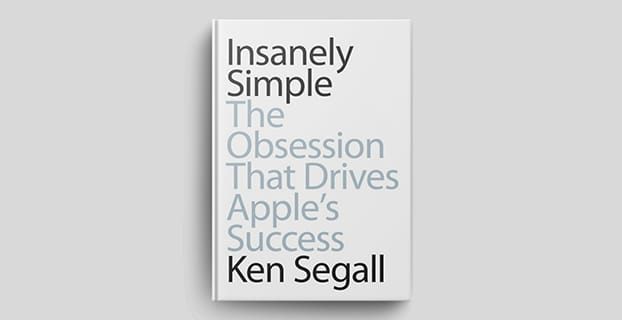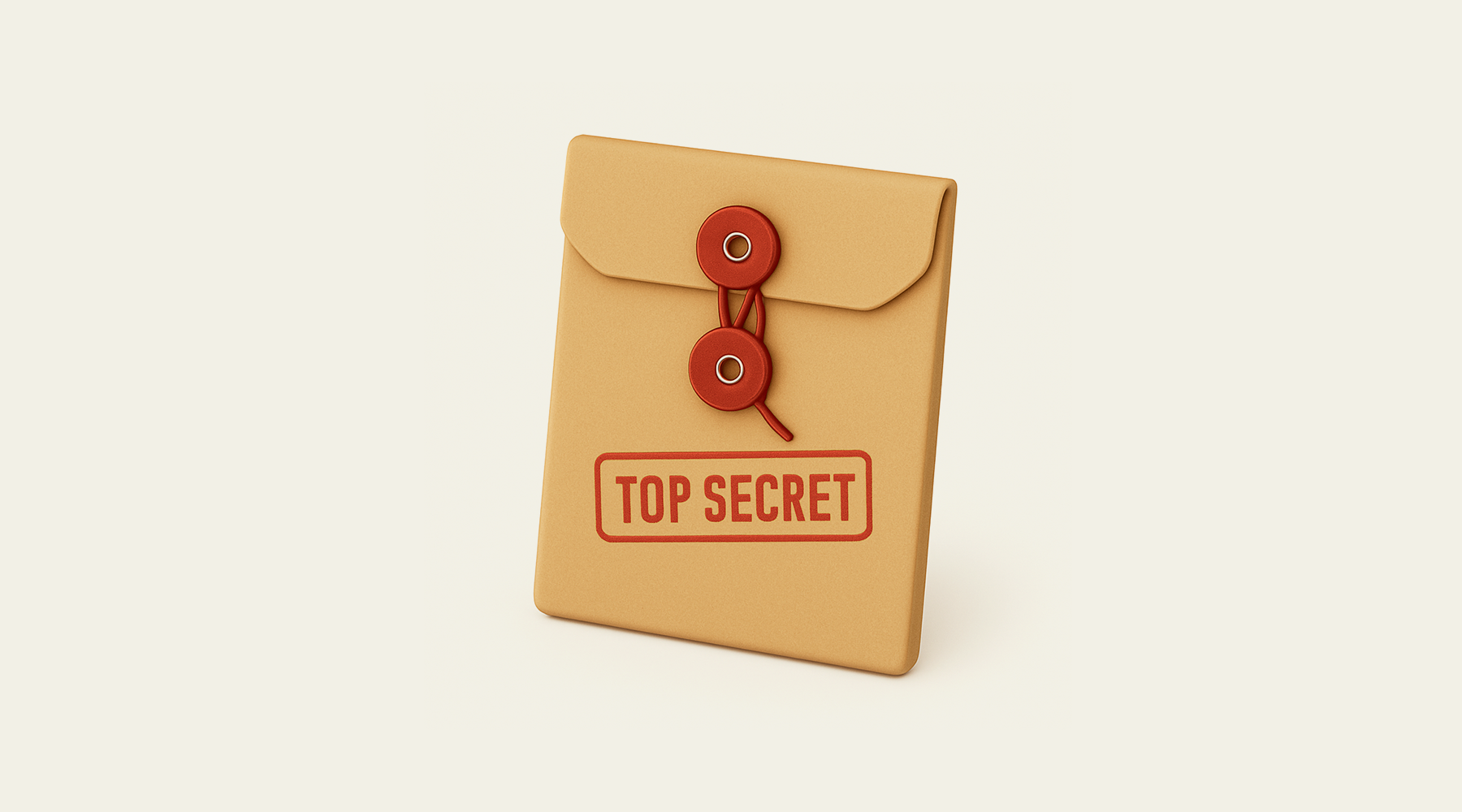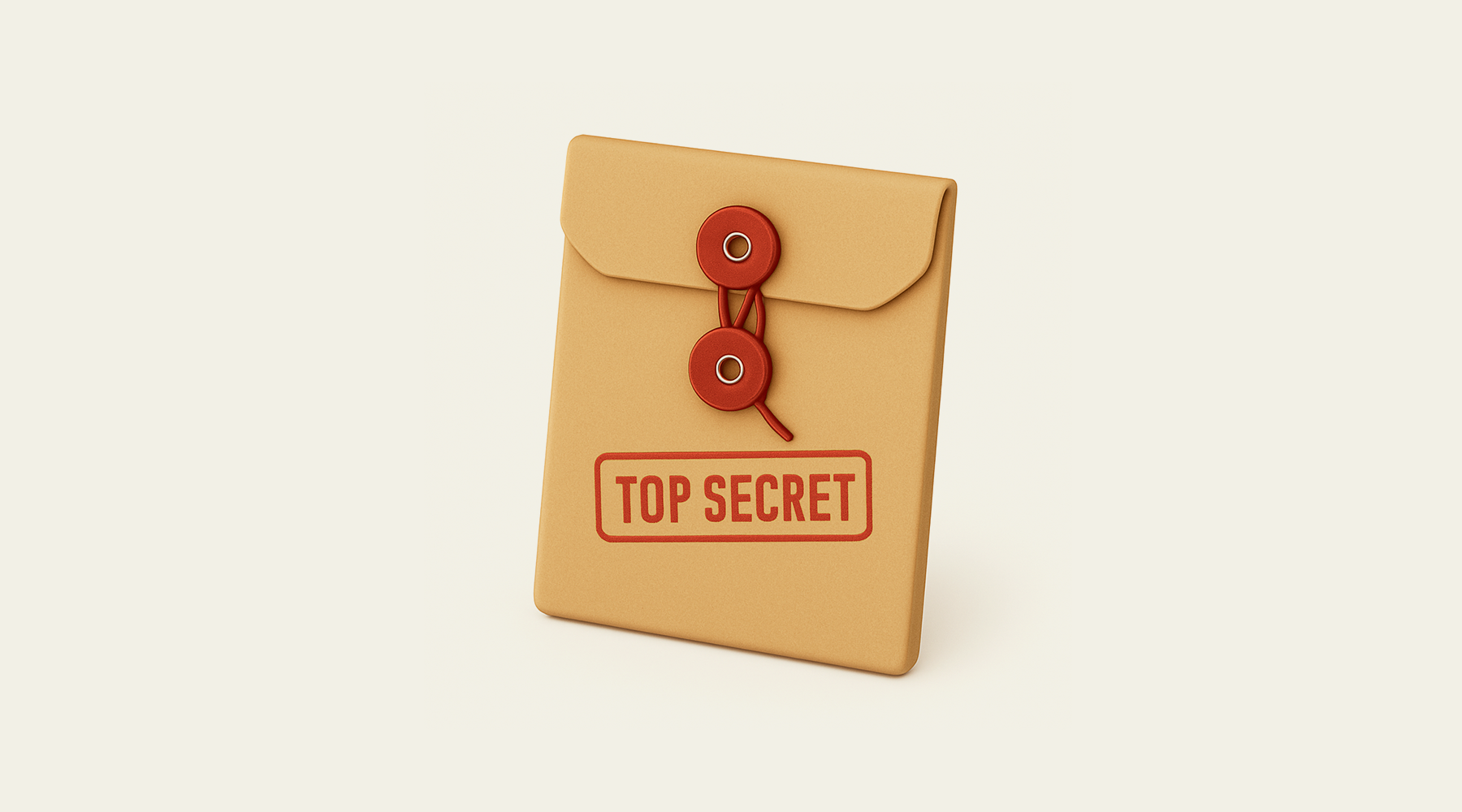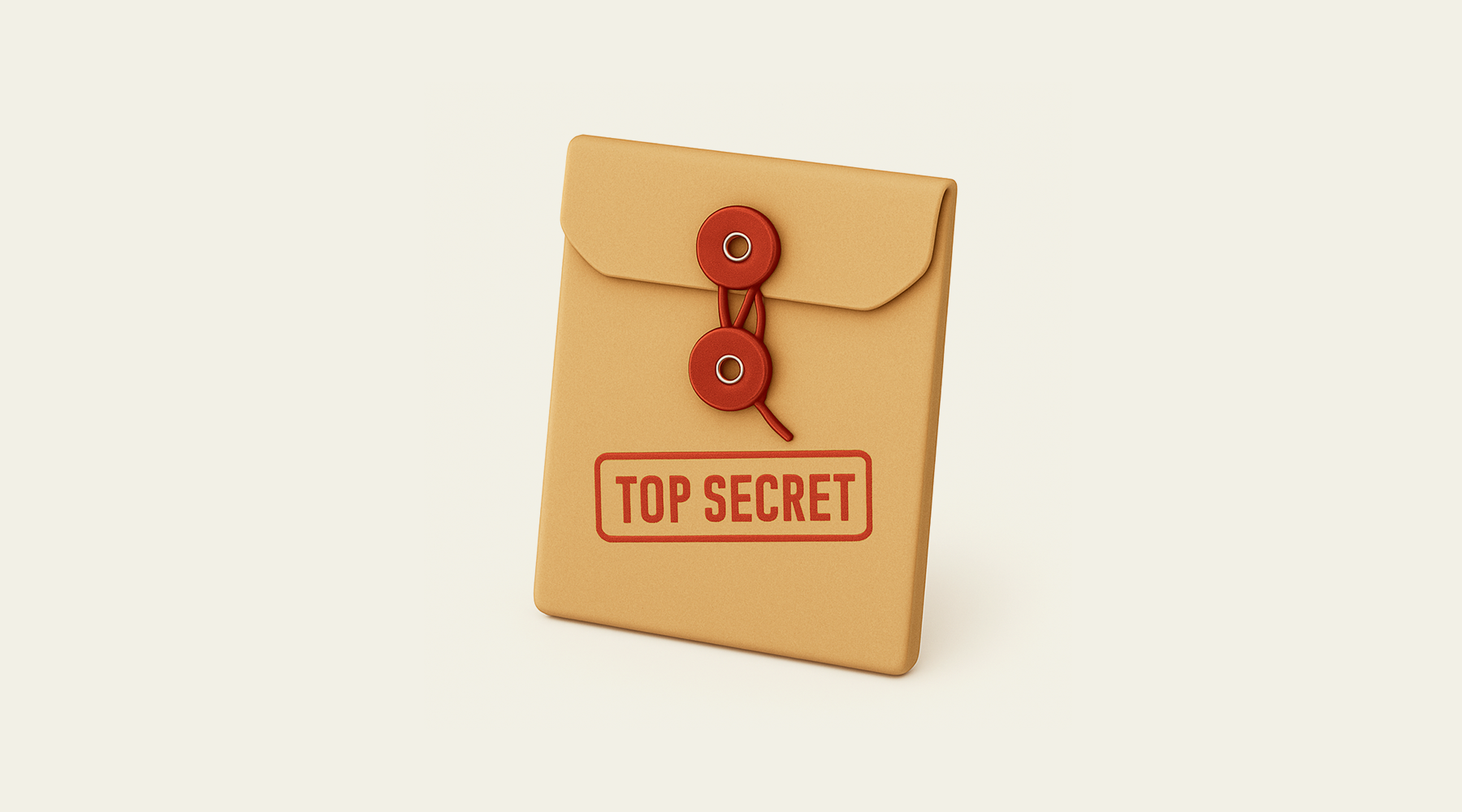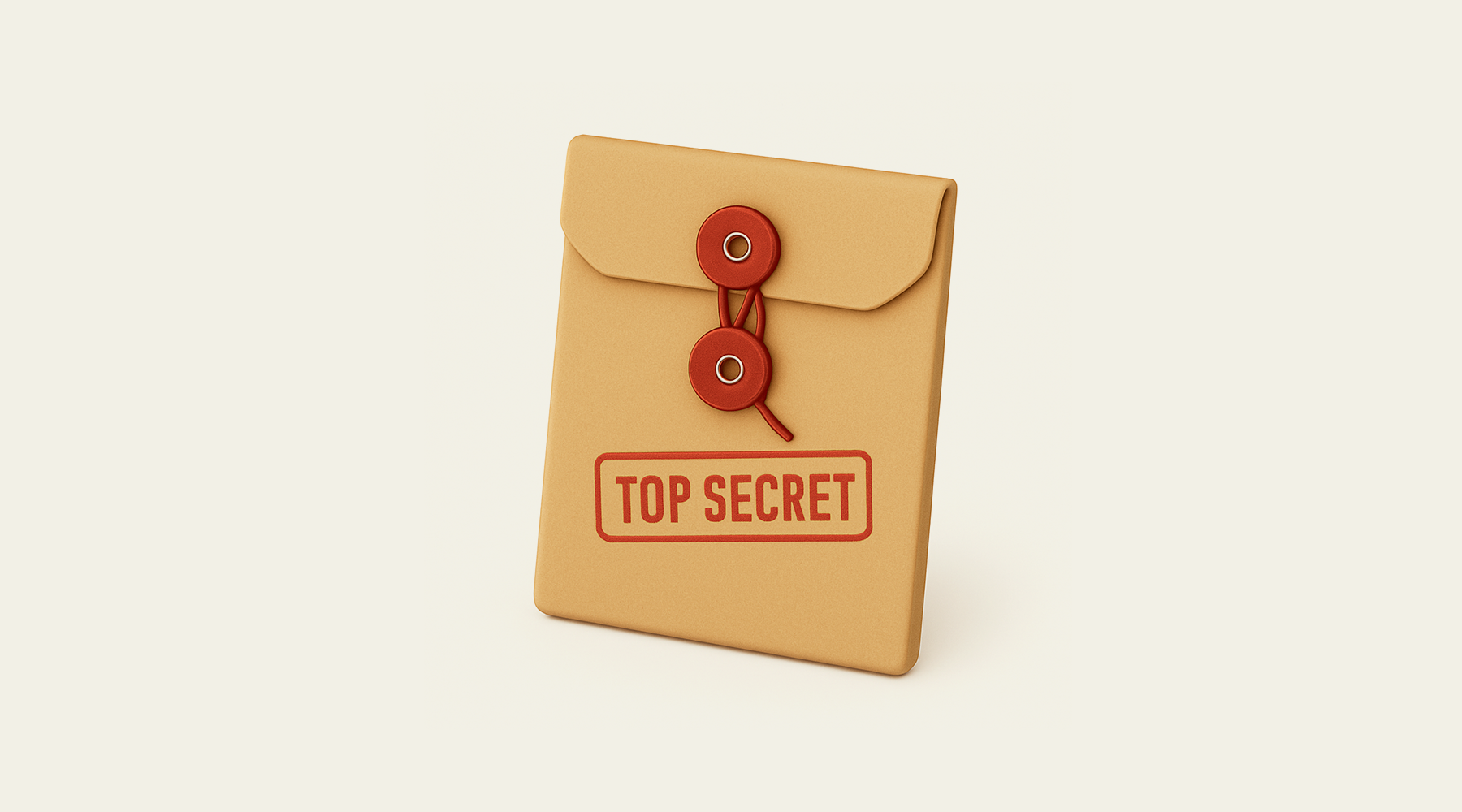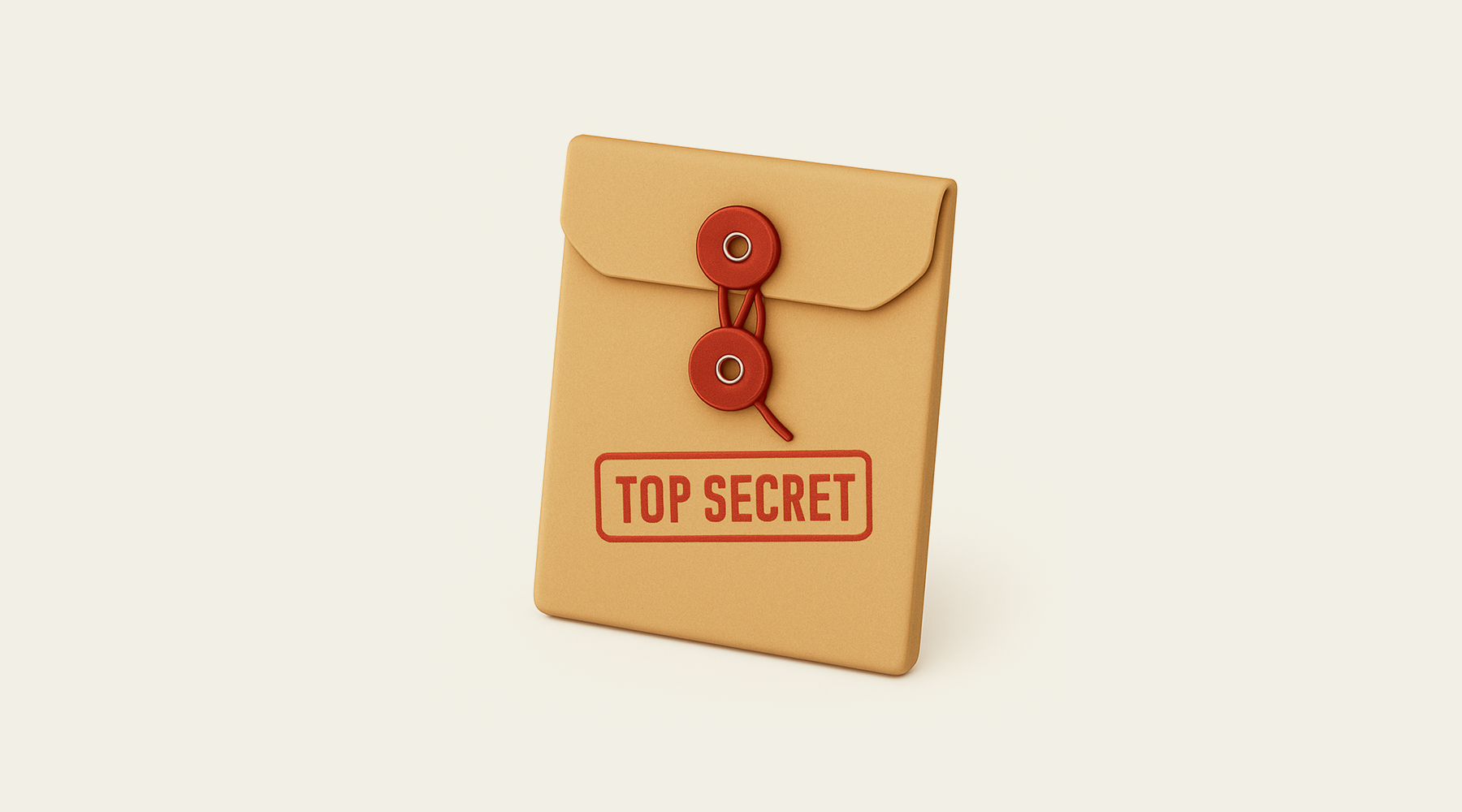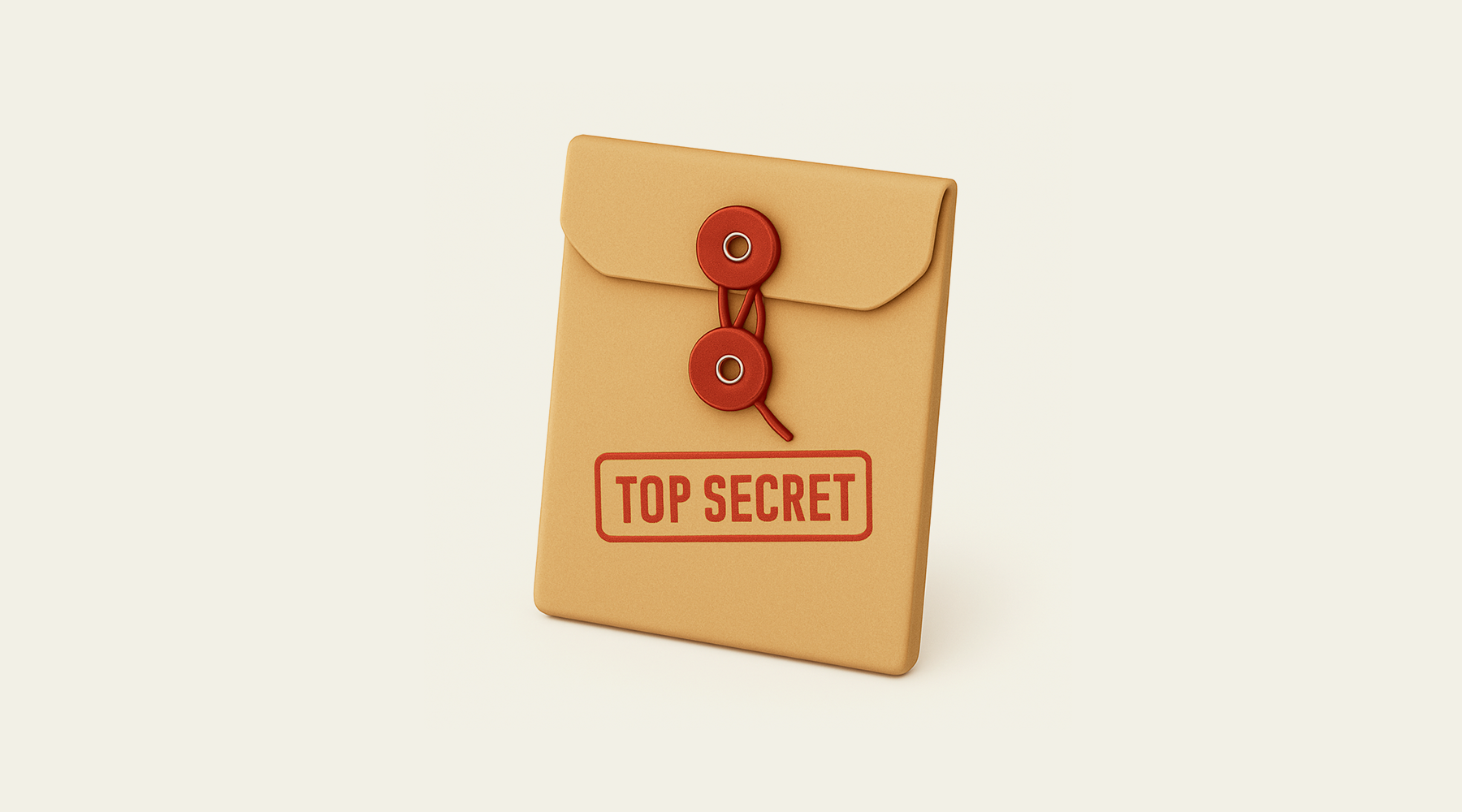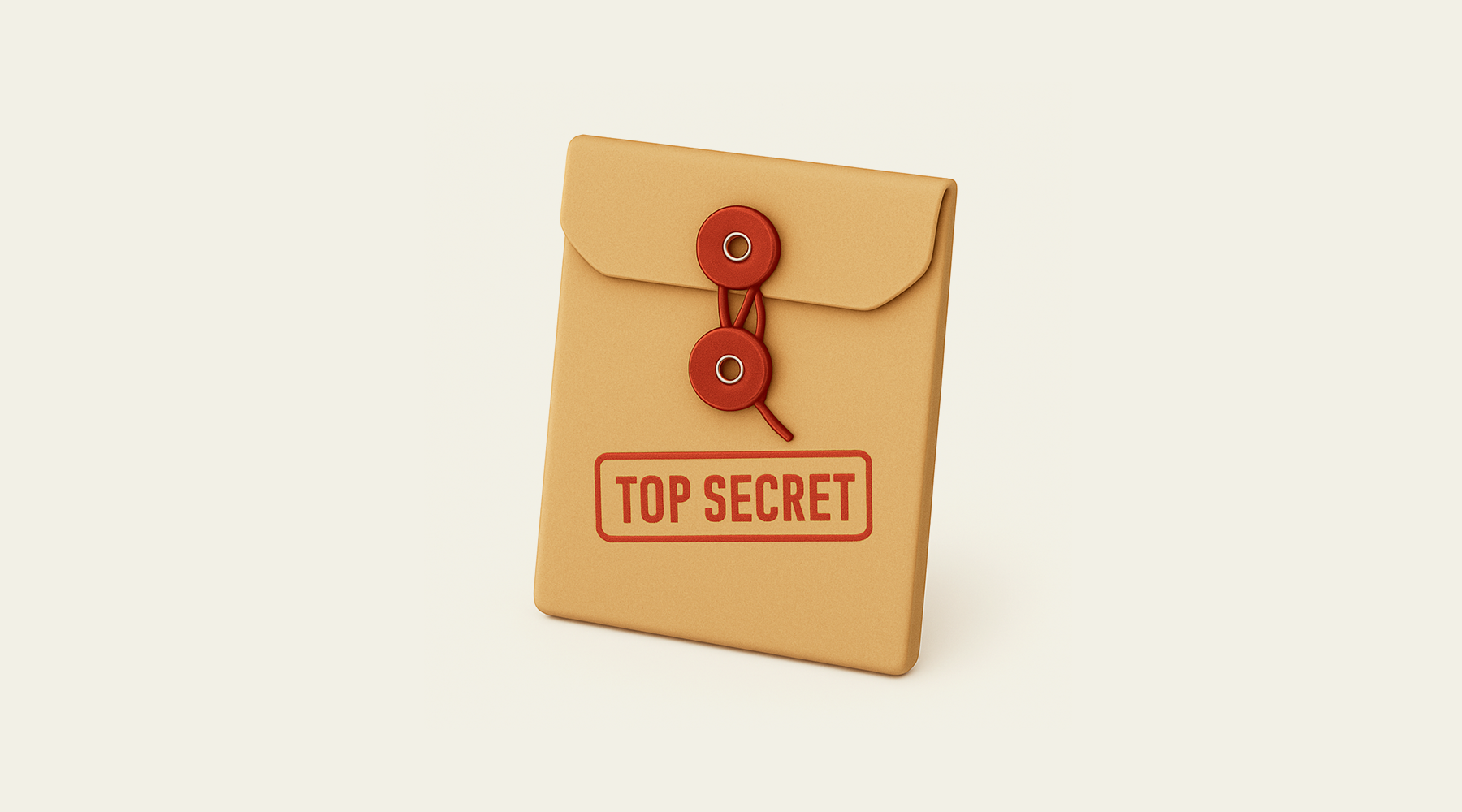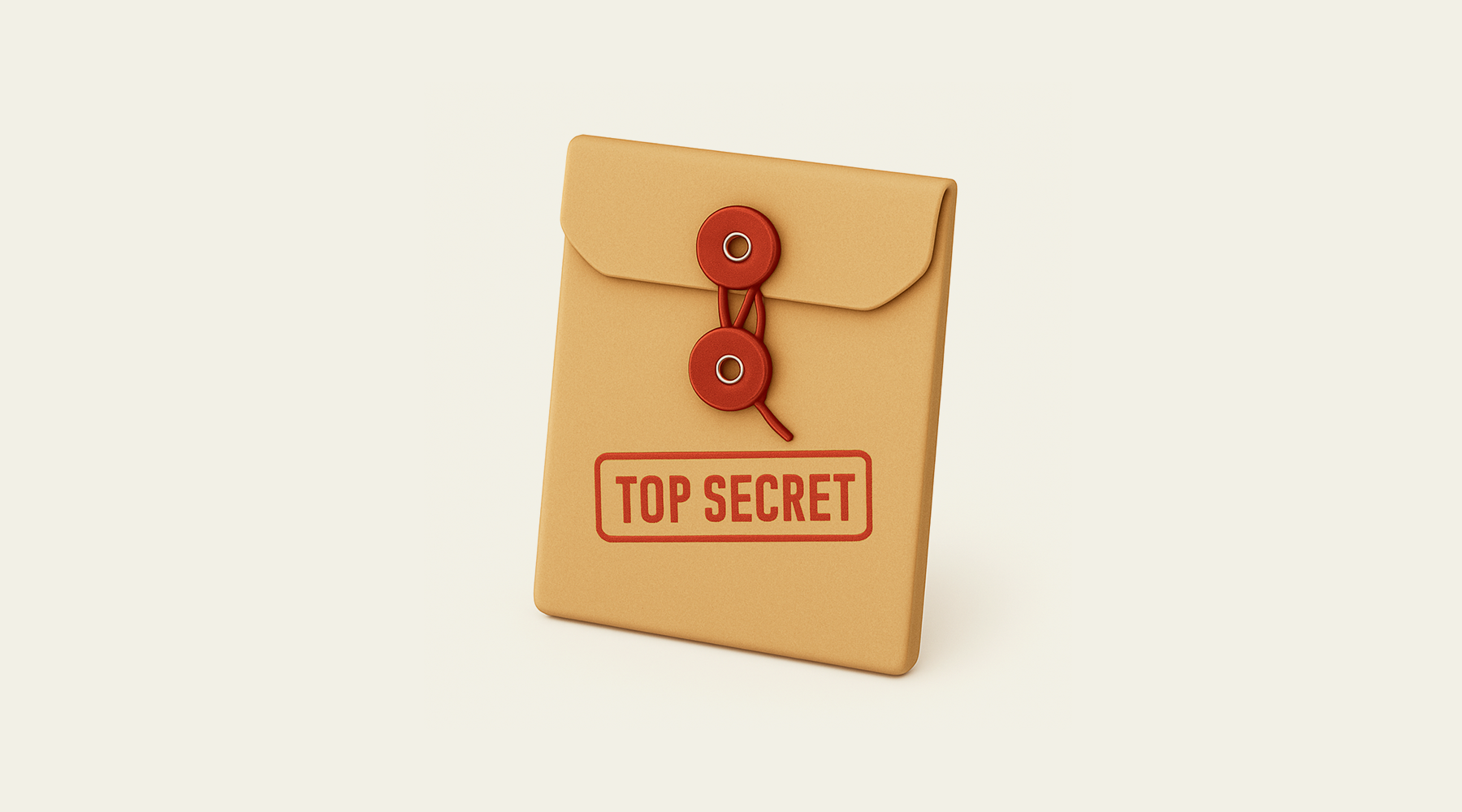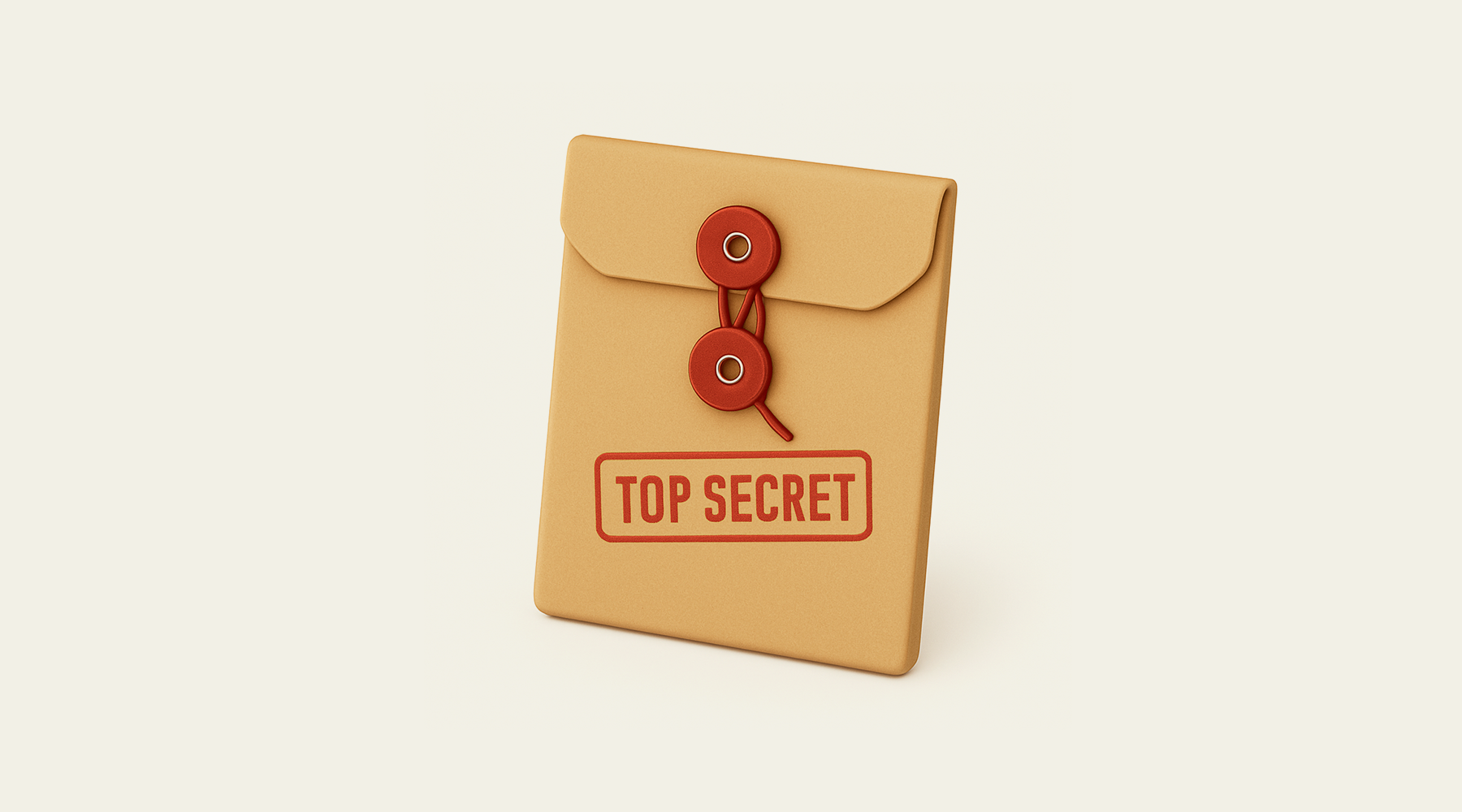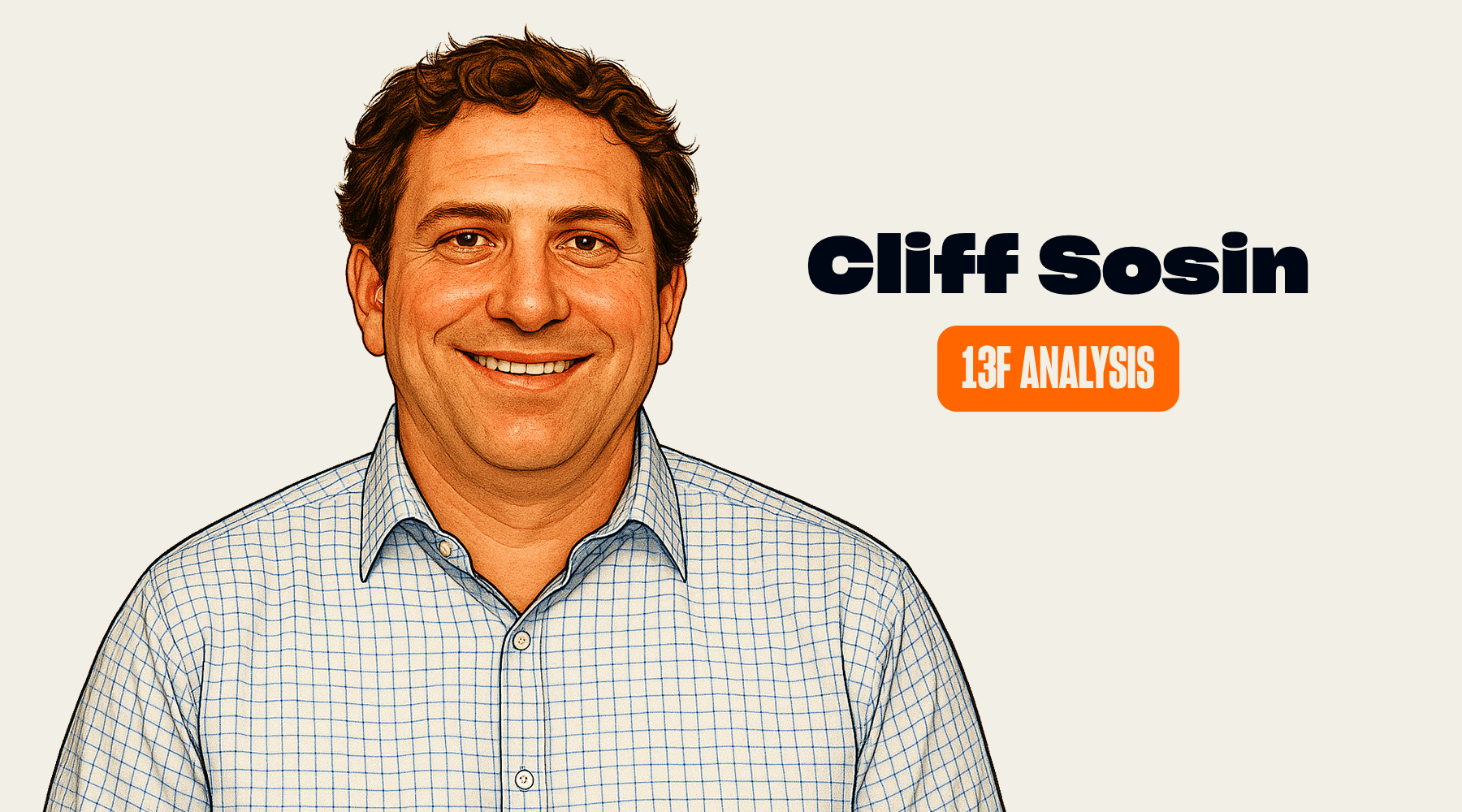This is my book summary of Insanely Simple: The Obsession That Drives Apple's Success by former ad agency creative director Ken Segall — who helped create the legendary Think Different and name the iMac creating the i-product naming convention. My notes are informal and often contain quotes from the book as well as my own thoughts. This summary also includes key lessons and important passages from the book.
If you just want the best 5 ideas and stories from the book, see 5 Lessons on Simplicity from Steve Jobs →
Video Book Summary
On Outliers with Daniel Scrivner, I recorded a 2 hour summary of Insanely Simple: The Obsession That Drives Apple's Success. For more, read through the full show notes and transcript for Part 1 and Part 2 of my book summary.
Subscribe to my YouTube channel →
The Book in Three Sentences
To Steve Jobs, Simplicity was a religion. It was also a weapon. Revolution after revolution, Jobs proved that Simplicity is the most powerful force in business. It guides the way Apple is organized, how it designs products, and how it connects with customers. In this book, Ken Segall shares the ten elements of Simplicity that have driven Apple's historic success — which you can use to propel your own organization.
Harnessing the Power of Simplicity
Think Brutal. No need to be mean, just brutally honest—and avoid the partial truths while you're at it. Ask those you interact with to do the same. People will be more focused, more positive, and more productive when they don't have to guess what you're thinking. Positive or negative, make honesty the basis of all interactions. You'll avoid wasting valuable time and energy later.
Think Small. Swear allegiance to the concept of small groups of smart people. Remember it well when new project groups are formed. This is a key component of Simplicity, and you must become its champion. Small groups of smart people deliver better results, higher efficiency, and improved morale, Also, look suspiciously at any project plan that doesn't include the regular participation of the final decision maker. It's critical. Having the decision maker appear at the very end of the process to say yea or nay is a recipe for frustration and mediocrity.
Think Minimal. Be mindful of the fact that every time you attempt to communicate more than one thing, you're splintering the attention of those you're talking to—whether they're customers or colleagues. If it's necessary to deliver multiple messages, find a common theme that unites them all and push hard on that idea. You want people to remember what you say—and the more you cram into your communication, the more difficult you make it for them. Remember that a sea of choices is no choice at all. The more you can minimize your proposition, the more attractive it will be.
Think Motion. The perfect project timeline is only slightly less elusive than the Holy Grail. It takes some effort to figure it out, but once you do, you'll have created a template that promotes success. You may not be the person tasked with creating timelines, but you can try to influence those who are. This is the kind of thing that most people just accept, but they shouldn't. The right timing is as important as the right people. Always be wary of the "comfortable" timeline—it's just a fact of life that a degree of pressure keeps things moving ahead with purpose. With too much time in the schedule, you're just inviting more opinions, and more opportunities to have your ideas nibbled to death. Keep things in motion at all times.
Think Iconic. Even if you're not in the marketing biz, it will serve you well to crystallize your thinking by leveraging an image that can symbolize your idea, or the spirit of it. And if you are in the marketing business, you're simply required by law to think this way. Whatever presentations you make, whatever products you sell, whomever you're trying to convince—never forget the power of an image to galvanize your audience. Note that there's a big difference between finding a great image and decorating a PowerPoint presentation. There's too much decorating in the world already, and for the most part it's meaningless. Find a conceptual image that actually captures the essence of your idea. Be simple and be strong.
The same principle applies whether you're talking to colleagues or to the public. Over time, a conceptual image gives people an easy way to identify your company, your idea or your product. Memorable images often communicate more effectively than words—which is why those who value Simplicity tend to rely on them.
Think Phrasal. This is an area where just about every business needs more work. Words are powerful, but more words are not more powerful—they're often just confusing. Understand that in your company's internal business and in communications with your customers, dissertations don't necessarily prove smarts. In fact, they tend to drive people away.
Though many writers never seem to grasp the point, using intelligent words does not necessarily make you appear smarter. The best way to make yourself or your company look smart is to express an idea simply and with perfect clarity. No matter who your audience is, it's more effective to communicate as people do naturally. In simple sentences. Using simple words. Simplicity is its own form of cleverness—saying a great deal by saying little.
Apple's website is a primer for intelligence in communications. There is a cleverness in writing that runs throughout, but much of the feeling of Apple's "smarts" comes from its brevity and straightforward-ness. In a world where too many people are trying too hard, Simplicity can be extremely refreshing.
The same can be said for product naming. Simple and natural names stick with people, while jargon and model numbers do not. If you wish people to form a relationship with your product, it needs a name people can naturally associate with. Product naming is one area in which Simplicity pays immediate returns.
Think Casual. Do what Steve Jobs did: Shun the trappings of big business. Operating like a smaller, less hierarchical company makes everyone more productive—and makes it more likely that you'll become a bigger business. Choreographed meetings and formalized presentations may transfer information from person to person, but they neither inspire nor bring a team closer together. Embrace the fact that you'll get more accomplished when you converse with people rather than present to them. You'll still have plenty of opportunities to dress up and do things the old-fashioned way. But internally, and on a day-to-day basis with your clients—de-formalize.
Many great creative ideas are actually born in these types of briefings, when key words or phrases emerge in conversation. Some of the agency's most compelling words for Apple were generated this way. If you want to reap the benefits of Simplicity, think big—but don't act that way. As Steve Jobs proved, one of the most effective ways to become a big business is to maintain the culture of a small business.
Think Human. Unless you're in the business of sterilizing things, business is no place to be sterile. Have the boldness to look beyond numbers and spreadsheets and allow your heart to have a say in the matter. Bear in mind that the intangibles are every bit as real as the metrics— oftentimes even more important. The simplest way—and most effective way-to connect with human beings is to speak with a human voice. It may be necessary in your business to market to specific target groups, but bear in mind that every target is a human being, and human beings respond to Simplicity.
Think Skeptic. Expect the first reaction of others to be negative. The forces of Complexity will inevitably tell you that something can't be done, even if the truth is that your request simply requires extra effort.
You'll probably achieve better results if you believe more in the talent of people to work miracles than in those who are quick to provide negative answers.
Don't allow the discouragement of others to force compromise upon your ideas. Push. If you can't get satisfaction with one person or vendor, move to another. If there was one area in which Steve Jobs had a well-deserved reputation for being impossible, this was it. He was relentless about executing ideas and demanding that people perform.
Take pride in your independence and objectivity too. See facts and opinions in context. Definitely consider the expertise of those who provide counsel, but evaluate those opinions against things that may be beyond the expert's vision-like your long-term goals. Steve Jobs knew that the short-term cost, even if it's large, is often outweighed by the future benefit. Real leaders have the ability to grasp the context and decide accordingly. Simplicity isn't afraid to act on Common Sense, even when it runs counter to an expert's opinion.
Think War. Extreme times call for extreme measures. When your ideas are facing life or death, that's an extreme time. Like a soldier in battle, you can't afford to suffer even a single hit—so make sure you hit first. Pull out all the stops. Remember, when your idea's life is on the line, the last thing you want is a fair fight. Use every available weapon. If possible, grab the unfair advantage. And never forget what might well be your most effective weapon: the passion you feel for your idea.
Think Brutal
My highlights and notes from the chapter on why it's important to Think Brutal.
Blunt is Simplicity. Meandering is Complexity.
Steve didn’t like Complexity in his working relationships any more than he liked extra buttons on his devices.
Steve was always going to tell you what was on his mind, and he couldn’t care less how you might feel about it.
Clarity propels an organization. Not occasional clarity, but pervasive, twenty-four-seven, in-your-face, take-no-prisoners clarity.
Steve Jobs demanded straightforward communication from others as much as he dished it out himself. He had no patience for those who beat around the bush. He’d cut you off if you rambled. He ran his business as if there were precious little time to waste.
Simplicity has a merciless side. That is, there‘s no “almost” when it comes to making things simpler.
Apple’s longtime agency Chiat/Day is so well known for its clever t-shirts, that it once published a “best of” book. One of its more famous t-shirts attempted to fight off the human instinct to settle for near perfection. It reads, “Good enough is not enough.”
To settle for second-best is a violation of the rules of Simplicity, as it plants the seeds for disappointment, extra work, and more meetings.
Your challenge is to become unbending when it comes to enforcing standards. Mercilessly so.
In Apple’s world, every manager has to be a ruthless enforcer of high standards.
Steve had wit and he often used that to express his disdain for traditional corporate structures. There’s a story from the early days of Macintosh back at Chiat/Day, when one of the agency guys eagerly introduced himself to Steve on the set of a shoot.
“What do you do at the agency?” Steve asked.
“I’m an account guy,” he replied.
“Oh, so you’re overhead,” said Steve.
Though it was said in jest, Steve wasn’t kidding.
Another good Steve moment came when he interviewed Chiat/Day’s candidate to manage his global business.
“So, what are you doing now?” Steve asked.
“I’m the global account director of Nike at Wieden&Kennedy,” said our main, knowing he was holding a straight flush.
Steve paused. He was a big fan of the Nike brand.
“Nike has been great for a long time,” said Steve.
“Thanks,” said the candidate.
“So… your job is to not fuck anything up,” he concluded.
Steve ended up approving that hire. He just wanted to make sure our man understood the difference between working on an account in serious need of help—like Apple at the time—and maintaining a piece of business where the client is already firing on all cylinders.
Similarly, Steve was candid with his feedback when people were under-performing. Once he remarked, “If you can’t do a better job than that, you’re going to have to replace yourself.”
That Steve was intolerant of stupidity is a matter of record. He respectably wasn’t fond of employing stupidity, so if you were on Apple’s staff and wanted to retain that status, it was wise not to display your lack of smarts in a meeting with him. You’d just set him off and get it right between the eyes.
Think Small
My highlights and notes from the chapter on why it's important to Think Small.
Apple encourages big thinking but small everything else.
The story of Lorrie:
Meeting size is a good example. Once Chiat/Day was installed as Apple’s agency of record and we’d settled into our work, we would meet with Steve Jobs every other Monday.
One particular day, there appeared in our midst a woman from Apple with whom I was unfamiliar. I don’t recall her name, as she never appeared in our world again, so for the purposes of this tale, I’ll call her Lorrie. She took her seat with the rest of us as Steve breezed into the boardroom, right on time.
Steve was in a sociable mood, so we chatted it up for a few minutes and then the meeting began. “Before we start, let me just update you on a few things,” said Steve, his eyes surveying the room. “First off, let’s talk about iMac…”
He stopped cold. His eyes locked on to the one thing in the room that didn’t look right. Pointing to Lorrie, he said, “Who are you?”
Lorrie was a bit stunned to be called out like that, but she calmly explained that she’d been asked to attend because she was involved with some of the marketing projects we’d be discussing. Steve heard it. Processed it. Then he hit her with the Simple Stick.
“I don’t think we need you in this meeting, Lorrie. Thanks,” he said. Then, as if that diversion had never occurred — and as if Lorrie had never existed — he continued with his update.
So, just as the meeting started, in front of eight or so people whom Steve did want to see at the table, poor Lorrie had to pack up her belongings, rise from her chair, and take the long walk across the room toward the door.
Her crime: She wasn’t necessary.
What Lorrie experienced was the strict enforcement of one of Simplicity’s most important rules: Start with small groups of smart people—and keep them small. Every time the body count goes higher, you’re simply inviting Complexity to take a seat at the table.
The small-group principle is deeply woven into the religion of Simplicity. It’s key to Apple’s ongoing success and key to any organization that wants to nurture quality thinking. There’s no such thing as a “mercy invitation.” Either you’re critical to the meeting or you’re not. It’s nothing personal, just business.
When Steve called a meeting or reported to a meeting, his expectation was that everyone in the room would be an essential participant. Spectators were not welcome.
Complexity normally offers the easy way out.
Simplicity is never achieved through expectations. Truthfully, you can do the brutal thing without being brutal. Just explain your reasons. Keep the group small.
Over the years, Apple’s marketing group has fine-tuned a process that’s been successfully repeated, revolution by revolution. Project teams are kept small, with talented people being given real responsibility — which is what drives them to work crazy hours and deliver quality thinking. Because quality is stressed over quantity, meetings are informal and visible progress is made on a weekly (if not daily) basis.
Most businesses follow an instinctive but misguided principle: The more critical the project, the more people must be thrown at it. The operative theory is that more brains equals more ideas. That’s hard to argue with — except that only occasionally do more brains mean better ideas.
**To say that putting more people on a project will improve the results is basically saying that you don’t have confidence in the group you started with. Either that or you’re just looking for an insurance policy — which also means you don’t have a lot of confidence in the group you started with. What you’re really saying is that you don’t have the right people on the job. So fix that.
**
The quality of work resulting from a project is inversely proportional to the number of people involved in the project.
The quality of work resulting from a project increases in direct proportion to the degree of involvement by the ultimate decision maker.
Steve understood and appreciated the creative process — which, in certain ways, is the relative absence of process. He got his ideas needed to be nurtured and protected. He knew that machine like analysis would not magically yield creative brilliance. He knew that if he enabled small groups of smart people, good things would happen — even if those results weren’t entirely predictable.
Think Minimal
My highlights and notes from the chapter on why it's important to Think Minimal.
**In 1997, at Apple’s annual WWDC event, Steve shared his beliefs around simplicity:
**People think focus means saying yes to the thing you’ve got to focus on. But that’s not what it means at all. It means saying no to the hundred other good ideas that there are. You have to pick carefully. I’m actually as proud of the things we haven’t done as the things we have done. Innovation is saying no to a thousand things.
**Mark Parker, Former President and CEO of Nike, once asked Steve for advice about where to take Nike. Steve volunteered:
**“Nike makes some of the best products in the world — products that you list after, absolutely beautiful, stunning products. But you also make a lot of crap. Just get rid of the crappy stuff and focus on the good stuff.”
As Steve often said, Apple is very good at saying no. It actively resists the temptation to make new products simply because it can.
**On product proliferation:
**Many companies can’t stop themselves from responding to every opportunity, trying to please every customer and close every sale — when in fact they would be better served by making their product lineup logical and easier to navigate.
Choosing the path of Simplicity, Apple elects to do just a few things but do them incredibly well. It builds a large and loyal following not because of the products it can make but because of the products it chooses to make. It makes premium products only. It’s happy to cede the market for low-end products to anyone who cares to take it.
Simplifying the target customer:
The PC companies are churning out different models for small business, big business, education, government, and consumers of every stripe. They offer more choices now than ever before — and make little profit on each.
Apple, anchored by its belief in Simplicity, has evolved in a very different way. Rather than splinter its computer-marketing efforts among different types of customers, it generally focuses on one. It simply sees its customers as people. It markets its products based on the belief that its customers aren’t looking for a great home computer or a great business computer — they’re looking for a great computer, period.
It’s a vastly simpler way to sell a product — more cost-efficient as well. Apple’s one marketing message serves all, giving customers credit for having the intelligence to self-select the model that best meets their needs. Some home users may feel they need the high-powered “Pro” machine. Some business users may prefer the basic entry model. All is good.
Remember, being complicated is easy. It’s Simplicity that required serious work. Minimizing product lines and consolidating target audiences requires an organization that’s willing to take a long, hard look at itself.
Steve looked at pretty much everything with the idea of cutting it down to its essence, whether it was a new product or a new ad. He had an instant allergic reaction to any suggestions that might add complication.
Don’t bury your facts in facts.
Human beings are a funny lot. Give them one idea and they nod their heads. Give them five and they simply scratch their heads. Or even worse, they forget you mentioned all those ideas in the first place.
Minimizing is the key to making a point stick. Though this is Common Sense, it may also be the most violated principle in marketing or any other business. Your point will be more quickly understood, and more easily remembered, if you don’t clutter it up with other points.
Strangely, some of the most brilliant people on earth sometimes need to be reminded.
At one agency meeting with Steve Jobs, we were reviewing the content of a proposed iMac commercial when a debate arose about how much we should say in the commercial. The creative team was arguing that it would work best if the entire spot was devoted to describing the one key feature of this particular iMac. Steve, however, had it in his head that there were four or five really important things to say. It seemed to him that all of those copy points would fit comfortably in a thirty-second spot.
After debating the issue for a few minutes, it didn’t look like Steve was going to budge. That’s when a little voice started to make itself heard inside the head of Lee Clow, leader of the Chiat team. He decided this would be a good time to give Steve a live demonstration.
Lee tore five sheets of paper off of his notepad and crumpled them into five balls. Once the crumpling was complete, he started his performance.
“Here, Steve, catch,” said Lee, as he tossed a single ball of paper across the table. Steve caught it, no problem, and tossed it back.
“That’s a good ad,” said Lee.
“Now catch this,” he said, as he threw all five paper balls in Steve’s direction. Steve didn’t catch a single one, and they bounced on the table and floor.
“That’s a bad ad,” said Lee.
**People will always respond better to a single idea expressed clearly. They tune out when Complexity begins to speak instead.
**
When in doubt, minimize.
Think Motion
My highlights and notes from the chapter on why it's important to Think Motion.
When Steve Jobs retook the helm at Apple, the biggest problem was the product line. What he told us was consistent with what he had said in a BusinessWeek interview right before he’d agreed to return to Apple: “The products suck! There’s no sex in them anymore!”
Common Sense often says that when it’s time to accelerate the decision process, apply in your best available tool: a small group of smart people.
Leonard Bernstein captured this thought perfectly when he said: “To achieve great things, two things are needed; a plan, and not quite enough time.”
I found the perfect time to be about 3 months. Any less time and we’d compromise on quality. Any more time and we’d invite overthinking.
Bernstein’s quote cites two essential elements of achieving greatness. Those apply well to Apple’s world, along with two addendums.**Aim realistically high.** When Apple created the first iPod, it didn’t set out to create a portable player that could accommodate music, movies, podcasts, and photos. It created a music player. The rest would come later. In other words, don’t overreach — it’s important to achieve greatness, but your project has to end on time and deliver what you’ve promised. (Obviously, you shouldn’t underreach either. You can’t be so “realistic” that you produce something lackluster.**Never stop moving.** The project begins on day one and should consumer people from the get-go. No time-outs allowed. Only when people are kept in constant motion do they stay focused with the right kind of intensity. Work isn’t supposed to be easy. It’s supposed to be gratifying.
Concentrating on building the best possible 1.0 product gives Apple a number of advantages beyond scheduling. It normally allows the company to create a product that’s not only revolutionary, but illuminated an even more exciting path ahead.
A good example is iPhone. The 1.0 version of this product didn’t even support apps, which quickly came to be the most revolutionary part of the platform. The original idea was that Apple would support only web apps developed in Safari.
Creating products this way gives Apple the ability to “recycle” its leadership. Apple creates the revolution, then — while its competitors work to catch up to the 1.0 version — it’s already at work on the 2.0 version. Year after year, as long as Apple continues to innovate, it has the opportunity to renew its leadership.
Apple gets an interesting marketing advantage from these cycles as well. Since it falls upon Apple’s competitors to prove they’ve created a better device, they normally gravitate toward specification-heavy advertising. They feel obligated to point out that they have more megapixels, more USB ports, more whatever. Meanwhile, Apple continues to marks its products as it always has in an emotional, human manner, pointing out benefits rather than specs. Unless it currently has a breathtaking technology, Apple takes itself out of the spec-comparison game — and makes more meaningful connections with its customers.
Think Iconic
My highlights and notes from the chapter on why it's important to Think Iconic.
The Think different ads were a vivid reminder that a single iconic image can be the most powerful form of communication. As we developed the campaign, each ad consisted of one black-and-white portrait of an Apple “hero,” bleeding off all sides of the page, with nothing more than the Apple logo and the words “Think different” placed tastefully in a corner. On television, the commercial that launched the campaign similarly used black-and-white film clips that captured the spirit of each individual. Over this series of images Richard Dreyfuss read a script that praised the “crazy ones” who dared to see things differently.
The Think different campaign couldn’t have been simpler. No matter where those black-and-white images appeared — in magazines, on posters, and on billboards — they registered with viewers in a nanosecond.
Steve Jobs speech when he introduced the Think different campaign:
To me, marketing is about values. This is a very complicated world, it's a very noisy world, and we're not going to get a chance to get people to remember much about us. No company is. And so we have to be really clear on what we want them to know about us.
Now, Apple—fortunately—is one of the half a dozen best brands in the whole world. Right up there with Nike, Disney, Coke, Sony. It is one of the greats of the greats. Not just in this country, but all around the globe. But even a great brand needs investment and caring if it's going to retain its relevance and vitality, and the Apple brand has clearly suffered from neglect in this area in the last few years. And we need to bring it back. The way to do that is not to talk about speeds and feeds. It's not to talk about MIPS and megahertz. It's not to talk about why we're better than Windows. The dairy industry tried for twenty years to convince you that milk was good for you. It's a lie, but they tried anyway. And then they tried "got milk?" and the sales have gone like this [up]. "Got milk?" doesn't even talk about the product—matter of fact the focus is on the absence of the product.
But the best example of all, and one of the greatest jobs of marketing that the universe has ever seen, is Nike. Remember, Nike sells a commodity. They sell shoes. And yet when you think of Nike, you feel something different than a shoe company. In their ads, as you know, they don’t ever talk about the product. They don't ever tell you about their air soles and why they're better than Reebok's air soles. What does Nike do in their advertising? They honor great athletes, and they honor great athletics. That's who they are, that's what they are about.
Apple spends a fortune on advertising. You'd never know it. ... So, when I got here, Apple (had) just fired their agency and was in a competition with twenty-three agencies that, you know, four years from now they'd pick one. And we blew that up and we hired Chiat/Day, the ad agency that I was fortunate enough to work with years ago, who created some award-winning work, including the commercial voted the best ad ever made, 1984, by advertising professionals....
And we started working with that agency again, and the question we asked was: Our customers want to know, "Who is Apple, and what is it that we stand for? Where do we fit in this world?" And what we're about isn't making boxes for people to get their jobs done, although we do that well. We do that better than almost anybody in some cases. But Apple is about something more than that. Apple at the core, its core value, is that we believe that people with passion can change the world for the better. That's what we believe... And that those people who are crazy enough to think they can change the world are the ones that actually do.
And so what we're going to do in our first brand marketing campaign in several years is to get back to that core value. A lot of things have changed. The market is a totally different place from what it was a decade ago. And Apple is totally different, and Apple's place in it is totally different.... But values—and core values—those things shouldn't change. The things that Apple believed in at its core are the same things that Apple really stands for today.
And so we wanted to find a way to communicate this. And what we have is something that I am very moved by. It honors those people who have changed the world. Some of them are living; some of them are not.
But the ones that aren't, as you'll see—you know that if they ever used a computer, it would have been a Mac. The theme of the campaign is Think different... honoring the people who think different and who move this world forward. And it is what we are about; it touches the soul of this company…. I hope that you feel the same way about it I do.
A company facing extinction will normally do whatever it takes to keep itself alive — anything except increasing marketing costs, of course. So it takes a large degree of nerve to pour a good chunk of what’s left into something as intangible as a new brand campaign. But that’s just what Steve did. In a certain way, he seemed to feel liberated by Apple’s predicament. He made it clear that Apple couldn’t be withdrawing into a shell at a time like this — now was its last chance to get out there and out its stake in the ground. The company had to invest in itself. And invest Steve did.
By saying fewer things in more important places, Apple seemed to get more notice than companies like IBM, which had a vastly larger marketing budget.
Chiat’s media chief, Monica Karo, made sure that the Think different campaign appeared only in those places where it would achieve maximum notice, and never in places that would degrade the message.
These portraits of Think different heroes never ran on the inside pages of a magazine. They ran only on back covers, where they would shine on their own.
But it was out in the real world that the ads had such a commanding presence. Billboards became a huge part of the effort — but only in the most prime locations. Apple started systematically locking up the most visible billboard locations all over the United States as they became available — near airports, approaches to major cities, etc.
Selling a brand campaign to a client is often like selling a nineteen-year-old on the benefits of starting a retirement account. The gains are just too far off in the future. They’re in business to make money now.
Think Phrasal
My highlights and notes from the chapter on why it's important to Think Phrasal.
The incredible story of naming the iMac and created the “i” naming framework that would become Apple’s hallmark.
Incredibly enough, it all started by trying to beat the name Steve originally gave to the iMac: MacMan.
“We already have a name we like a lot, but I want you guys to see if you can beat it,” said Steve. “The name is ‘MacMan.”
While that frightening name is banging around in your head, I’d like you to think for a moment about the art of product naming. Because of all the things in this world that cry out for Simplicity, product naming probably contains the most glaring examples of right and wrong.
Phil Schiller, Apple’s worldwide marketing manager, was in the room, and Steve revealed that “MacMan” was Phil’s contribution.
“I think it’s sort of reminiscent of Sony,” said Steve, referring of course to Sony’s legendary Walkman line of personal music players. “But I have to tell you, I don’t mind a little rub-off from Sony. They’re a famous consumer company, and if MacMan seems like a Sony kind of consumer product, that might be a good thing.”
Before we left the premises, Steve threw out some guidelines for our naming development.
“First of all, you have to know it’s a Mac,” he said. “So I think it has to have the ‘Mac’ word in it.” This was priority number one, because looks aside, it was a Max through and through, running all the same software.
Steve had two warnings for us, though — two traps he didn’t want us to fall into.
“This is a full-powered Mac, but some people are going to look at it and think it’s a toy. So the name shouldn’t sound too frivolous,” he said.
“There‘s also a danger people might think it’s a portable, because it’s got this big handle on top. But this thing is heavy. That handle is just there to make it easier to move around in the house. So don’t make it sound portable,” he said.
We’d gone through a long list of candidates, trimmed it down to five favorites, and created a single poster board for each. Each board presented a name in big, juicy type, along with a short list of bullet points that described its virtues.
Our favorite name was one that I’d come up with early in the process: “iMac.” It seemed to solve all the problems at once. It was clearly a Mac. The i conveyed that this was a Mac designed to get you onto the Internet. It was also a perfectly succinct name — just a single letter to the word “Mac.” It didn’t sound like a toy and it didn’t sound portable.
We'd gone through a long list of candidates, trimmed it down to five favorites, and created a single poster board for each. Each board presented a name in big, juicy type, along with a short list of bullet points that described its virtues.
Our favorite name was one that I'd come up with early in the process: "iMac" It seemed to solve all the problems at once. It was clearly a Mac. The i conveyed that this was a Mac designed to get you onto the Internet. It was also a perfectly succinct name — just a single letter added to the word "Mac." It didn't sound like a toy and it didn't sound portable.
Using the word "Mac" in the product name was more of a revolution than you might realize. At that time, "Macintosh" had yet to be shortened to a more colloquial "Mac" in the name of any Apple computer. For Simplicity and minimalism, "iMac" seemed to be perfect.
And of course, there was also one other small advantage that came with the name "iMac." It created an interesting foundation upon which Apple could name future consumer products. Maybe, possibly, somehow, some-time, Apple would see fit to create another "i" product?
A week later, we'd generated another batch of names. We threw out all the previous names but left "iMac" in the mix, despite the fact that Steve had used the "hate" word. In this presentation, I relied on a philosophy I learned long ago from a wise man in advertising. It was "As long as you've got new ideas to share, you are free to re-present the old one."
Back in Cupertino for presentation number two, I walked Steve through the new names first. After I'd gone through the new list, he still didn't like any. That's when I pulled out "iMac" again and told him we still had a lot of heart for that one. Steve gave it the courtesy of a fresh look.
"Well, I don't hate it this week," he said. "But I still don't love it. Now we've only got a couple days left, and I still think 'MacMan' is the best name we have."
I'd like to say that there was some big turnaround after this point, one moment of glory that had us all high-fiving one another, but there was not. The very next day, while talking to one of my Apple clients, I learned that there was action on the naming front. Steve was making the rounds asking people what they thought of "iMac." He'd had the name silk-screened onto a model to see how it looked.
I never heard another peep about this decision. Steve basically took it and ran. Obviously he liked what he saw when he got the model back, and he must have received positive reactions from his inner circle.
And so, "iMac" it was.
This, of course, says an interesting thing about the way Steve Jobs worked: He had an opinion. A very strong opinion. The kind of opinion that might knock you over and kick you a few times. But that's not to say he wasn't reasonable or wouldn't ultimately change his mind if confronted with heartfelt opinions presented with passion.
This was a key moment for Apple, when its love of Simplicity won the day and set it on a course it follows to this very day. Steve was unrelenting in his desire to give this great product a great name. He appreciated the power of words. In this case, he appreciated the power of a single letter.
And that little letter "i" became one of the most important parts of the Apple brand.
Beyond Common Sense, Apple's approach to naming embraces the concept of consistency. Its computers are all Macs, all the time: iMac, Mac Pro, MacBook Air, and MacBook Pro. The "i" identifies Apple's consumer devices, and is always attached to a word that's descriptive of the product or product category. The naming structure across Apple's major product lines is easy for current and potential customers to understand. And every time you say the name of an Apple product, you know it's an Apple product. That's an incredibly powerful concept, as simple as simple gets — but few companies manage to achieve that kind of branding power in their product names.
New models of iPhone have come out annually since 2007, but each and every one carries the same name. Modifiers exist to distinguish between models (3GS, 4, 4S,s, etc.), but such references are used only when conversationally necessary. Again, people will say, "I'll look it up on my iPhone" but rarely "I’ll look it up on my iPhone 4."
With several distinct shapes, iPod has its own naming story. Unlike the different models of iPhone, which all have a similar use, the different models of iPod have very different uses.
There's iPod touch for an iPhone-like experience with email and apps; iPod nano for full-featured portability; and iPod shuffle — featherweight, screen-less and ideal for working out. But even with distinct names for different models, iPod naming is based in Common Sense, with monikers that are descriptive of each model's size or purpose.
There are no arcane number-and-letter schemes. There are simply "touch," "nano," and "shuffle." These names themselves have become part of the customers vocabulary — single words that are easily remembered.
Apple doesn’t just keep naming simple for the sake of brand-building. It keeps naming simple so it doesn’t confuse the hell out of people.
Apple is unrelenting about sending the message of Simplicity to its customers. It does that with every product it creates — and every word it chooses.
Think Casual
My highlights and notes from the chapter on why it's important to Think Casual.
Simplicity is in a hurry. It wants to cut to the chase and concentrate on the important stuff. No insult to you and all the time you’ve spent preparing that convincing speech, but much of what you’re about to say is likely superfluous.
Many people incorrectly assume that by increasing the word count they will demonstrate their smarts, when the opposite is almost always closer to reality. Those who know how to communicate with brevity are the ones who come across as smarter and are more appreciated by executives who value their time.
Think Human
My highlights and notes from the chapter on why it's important to Think Human.
The technology that drives Apple devices is incredibly complex. One with technical expertise could write dissertations describing how these simple" devices do what they do.
But Apple never will. It prefers to speak in more human terms.
Apple didn't describe the original iPod as a 6.5-ounce music player with a five-gigabyte drive. It simply said, "1,000 songs in your pocket." This is the way human beings communicate, so this is the way Apple communicates.
Human-speak is a hallmark of Simplicity. It's the recognition that the best way to connect with people is to put things in human terms and use the words that people use in everyday conversation.
This human way of speaking became Apple's trademark at the very beginning. Despite the fact that Apple's products were pure technology-assemblages of circuit boards, buttons, and enclosures, Apple made it clear that they were made for ordinary people who wanted to do extraordinary things. It took something that was inherently complicated and turned it into something that was wonderfully simple.
Even during stages in its past when Apple rarely used imagery of human beings, it was widely regarded as the most human technology company on earth. Its humanity was achieved primarily through "intelligent wit." Here we must give credit to former Chiat creative director Steve Hayden, who led the charge on the original Macintosh. Students of advertising would do well to go back and read the ads Hayden wrote in the early days of Macintosh. He gave Apple a voice that was distinct, simple, and seemingly everlasting.
Apple isn’t interested in ideas that try to please everyone. Those are the ideas that end up stripped of their character, feeling calculated and worst of all less human.
Think Skeptic
My highlights and notes from the chapter on why it's important to Think Skeptic.
During my earliest days working on Apple's advertising, back when John Sculley was CEO, one of the agency's writers created a sign to hang over his office door.
It read: When® lawyers™ roamed the† earth!™*
Standing Up for Details
People often talk about the "unboxing experience" that comes with buying an Apple product. YouTube has countless videos documenting, step by step and piece by piece, the opening of an Apple product box. To the outsider, this is simply another example of Apple fanboy-ism. It's just a box, right?
To Apple, a box is hardly "just a box." The company takes incredible care to ensure that the entire customer experience is consistently first quality. And that first moment, when the customer is going through the packaging, is a significant part of that experience.
Apple's singular obsession: the customer experience.
If there is one focus at Apple that transcends all others, it's the customer experience. The goal is to give the customer a consistently great experience throughout their entire relationship with Apple. From TV ad and website to shopping to unboxing to everyday use to repair and support, Apple aims to consistently deliver the same values and speak in the same tone.
Think War
My highlights and notes from the chapter on why it's important to Think War.
It must become your nature never to relent.
Every new plan and every new idea needs to break through a layer of resistance.
Think Different
My highlights and notes from the chapter on why it's important to Think Different.
In an interview, Steve Jobs once said: “Sometimes when you innovate, you make mistakes. It is best to admit them quickly, and get on with improving your other innovations.”
Steve Jobs was a firm believer in the concept of the "brand bank."
He believed that a company's brand works like a bank account. When the company does good things, such as launch a hit product or a great campaign, it makes deposits in the brand bank. When a company experiences setbacks, like an embarrassing mouse or an overpriced computer, it's making a withdrawal. When there's a healthy balance in the brand bank, customers are more willing to ride out the tough times. With a low balance, they might be more tempted to cut and run.
Having a high balance in the brand bank makes all the difference.
Highlights & Takeaways
Steve Jobs taught us many things. But perhaps his most timeless lesson was in the power of simplicity.
Apple wielded simplicity. Using it to ship breathtaking products, enter new markets, and build magically simple software.
The best study on Apple’s approach to simplicity is “Insanely Simple: The Obsession That Drives Apple’s Success” by Ken Segall.
Here are my favorite ideas from the book:
- As those who worked at Apple will attest, the simpler way isn’t always the easiest. Often it requires more time, more money, and more energy.
- Every one of Apple’s revolutions was both of the company’s devotion to Simplicity. Apple’s goal with every product is to make something “simple amazing, and amazingly simple.”
- Simplicity not only enables Apple to revolutionize. It enables Apple to revolutionize repeatedly.
- As Simplicity becomes more rare, it also becomes more valuable. So your ability to keep things simple, and protect things from becoming more complicated, becomes more valuable as well.
- Complexity, unfortunately, is part of the human condition. It lives inside all of us — yes, including people like Steve Jobs. By the end of the book, you’ll see that even Steve, champion of Simplicity, was perfectly capable of lapsing and falling victim, if only momentarily, to the Complexity within.
- Simplicity doesn’t spontaneously spring to life with the right combination of molecules, water, and sunlight. It needs a champion — someone who’s willing to stand up for its principles, that’s strong enough to resist the overtures of Simplicity’s evil twin, Complexity.
- Steve wielded “The Simple Stick” and always rejected work that failed to distill an idea down to its essence. He hated work that took a turn when it should have traveled in a straight line.
- Clarity propels organizations. Not occasional clarity but pervasive, twenty-four-seven, in-your-face, take-no-prisoners clarity. Steve demanded straightforward communication from others.
- “Good enough is not good enough.” Settling for second best is a violation of the rules of Simplicity, because it plants the seeds for disappointment, extra work, and more meetings. Your challenge is to be unbending when it comes to enforcing your standards. Mercilessly so.
- In Apple’s world, every manager has to be a ruthless enforcer of high standards.
- Apple encourages big thinking but small everything else. Small working teams. Small groups of approvers. Small meetings with only those essential in attendance. No “mercy invitations.” No spectators. Either you’re critical or you’re not.
- To say that putting more people on a project will improve the results is basically saying that you don’t have confidence in the group you started with. Either that or you’re just looking for an insurance policy — which also means you don’t have a lot of confidence in the group you started with. What you’re really saying is that you don’t have the right people on the job. So fix that.
- When process is king, ideas will never be.
- Mark Parker, when he was President and CEO of Nike, once asked Steve for advice. Steve hit him with the simple stick: “Nike makes some of the best products in the world — products that you list after, absolutely beautiful, stunning products. But you also make a lot of crap. Just get rid of the crappy stuff and focus on the good stuff.”
- Steve looked at pretty much everything with the idea of cutting it down to its essence, whether it was a new product or a new ad. He had an instant allergic reaction to any suggestions that might add complication.
- Human beings are a funny lot. Give them one idea and they nod their heads. Give them five and they simply scratch their heads. Or even worse, they forget you mentioned all those ideas in the first place.
- People will always respond better to a single idea expressed clearly. They tune out when Complexity begins to speak instead.
- When in doubt, minimize.
- Apple’s advertising strategy can be boiled down to one sentence: Saying fewer things in more important places.
- Apple rigidly enforces the principles of Simplicity whenever it speaks to its customers. Most of its product ads simply show a brief demonstration of the device.
- The technology that drives Apple devices is incredibly complex. But Apple prefers to speak in human terms. Apple didn’t describe the original iPod as a 6.5-ounce music player with a five-gigabyte drive. It simple said, “1,000 songs in your pocket.” Human-speak is a hallmark of Simplicity. It’s the recognition that the best way to connect with people is to put things in human terms and use the words that people use in everyday conversation.
Back Cover
"Simple can be harder than complex. You have to work hard to get your thinking clean, to make it simple. But it's worth it in the end, because once you get there, you can move mountains." — Steve Jobs
The back cover of the book reads:
To Steve Jobs, simplicity was a religion. It was also a weapon. Revolution after revolution, Jobs proved that Simplicity is the most powerful force in business. It guides the way Apple is organized, how it designs products, and how it connects with customers.
As ad agency creative director, Ken Segall played a key role in Apple's resurrection after Steve Jobs returned. He helped create such marketing campaigns as Think Different. By naming the iMac, he also laid the foundation for naming waves of i-products to come.
Now Segall puts you inside a conference room with Jobs and on the receiving end of his midnight phone cals. You'll understand how his obsession with Simplicity helped Apple perform better and faster, sometimes saving millions in the process.
You'll also learn the ten elements of Simplicity that have driven Apple's historic success — which you can use to propel your own organization.
Who is Ken Segall?
The author of the this book, Ken Segall, worked closely with Steve Jobs as ad agency creative director for NeXT and Apple. He was a member of the team that created Apple’s legendary Think different campaign, and he’s responsible for that little “i” that’s a part of Apple’s most popular products — having created the original name iMac that introduced this naming convention. Segall has also served as creative director for IBM, Intel, Dell, and BMW.
Buy the Book
For more, I highly encourage you to order Insanely Simple: The Obsession That Drives Apple's Success and read the entire book yourself.




